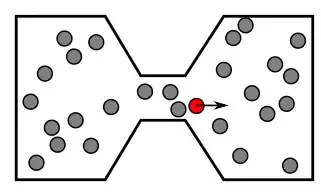I asked this question on Physics Stack Exchange - "Can Increment / maximization of Entropy be the “Cause” behind any phenomena?"
To which I received a beautiful explanation with a bewildering example. I quote the example below. In the example, it seems the Second Law of Thermodynamics is more powerful than Newton's Laws and if there is a conflict between the two, then the second law wins! And this is where I have the question - Can Second Law of Thermodynamics / Entropy override Newton's Laws?
Following are some specific questions:
Can the Second Law of Thermodynamics / Entropy override Newton's Laws?
From the example below, it seems that there is an underlying "Force" behind the second law of thermodynamics which drives it and which is more powerful than any other law and if there is a conflict between the second law of thermodynamics and any other law then second law will win. Is there really an underlying "force" behind the second law of thermodynamics, which drives the system in a particular direction?
Following is the example:
I remember witnessing a demonstration that the above abstract example is a close analogy to.
The demonstration involved two beakers, stacked, the openings facing each other, initially a sheet of thin cardboard separated the two.
In the bottom beaker a quantity of Nitrogen dioxide gas had been had been added. The brown color of the gas was clearly visible. The top beaker was filled with plain air. Nitrogen dioxide is denser than air.
When the separator was removed we saw the brown color of the Nitrogen dioxide rise to the top. In less than half a minute the combined space was an even brown color.
And then the teacher explained the significance: in the process of filling the entire space the heavier Nitrogen dioxide molecules had displaced lighter molecules. That is: a significant part of the population of Nitrogen dioxide had moved against the pull of gravity. This move against gravity is probability driven.
Statistical mechanics provides the means to treat this process quantitively. You quantify by counting numbers of states. Mixed states outnumber separated states - by far.
The climbing of the Nitrogen dioxide molecules goes at the expense of the temperature of the combined gases. That is, if you make sure that in the initial state the temperature in the two compartments is the same then you can compare the final temperature with that. The final temperature of the combined cases will be a bit lower than the starting temperature. That is, some kinetic energy has been converted to gravitational potential energy.
I think the above example counts as a case of probability acting as a causal agent.
